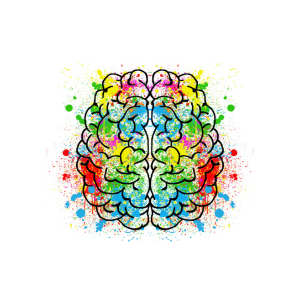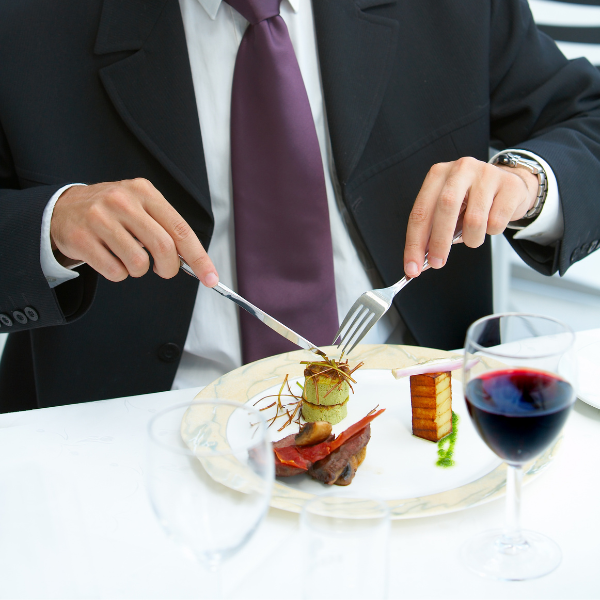An exquisite amalgamation of flavors, enticing aromas, and the passionate dedication of the chef are distinctive aspects that provide a memorable dining experience. However, the quest to create an unwavering mark in the hearts of patrons often begins even before they step foot into the restaurant. This journey begins with the immensely powerful aspect of a restaurant's brand identity: its logo.
How Do Colors Affect Mood?
A restaurant's logo serves as the face of the brand. Its colors can unleash remarkable elements related to the perception of the brand. Let's explore how these colors tie into brand perception and have the power to evoke emotions, leading to effective brand affinity.
What is Color Psychology?

Color psychology delves into the intricate connections between hues and our subconscious responses, unveiling how different shades can evoke emotions and shape perceptions.
In the realm of restaurant branding, the strategic selection of logo colors goes beyond visual appeal, as it holds the power to establish a strong emotional connection with customers. Whether it's the vibrant reds that spark appetite or the tranquil blues that instill a sense of calm, each color choice plays a pivotal role in crafting a captivating and memorable dining ambiance. The harmony between these colors and the overall dining experience can leave a lasting impression on patrons, influencing their perceptions and fostering a deeper sense of connection with the brand.
- Red: Often seen in fast-food chains, red is a fiery and exciting color that is known to stimulate appetite and is one of the most preferred logo colors in the restaurant industry. It exudes a sense of urgency and speed, which perfectly aligns with the fast-food business’ immediate service needs.
- Yellow: Synonymous with cheerfulness and joy, yellow gives a lively and inviting feel. When incorporated into a logo, it can result in an inviting representation, luring patrons to experience the warm and upbeat atmosphere of the restaurant.
- Green: Green is the epitome of health, peace, and nature. Restaurants focusing on vegetarian far, organic ingredients, or health-conscious menus often use this color to convey freshness and healthiness in their food options.
- Blue: Although this color is not commonly used in restaurant logos due to its appetite-suppressing effects, blue communicates a sense of tranquility and trust. Seafood restaurants or those with a calm, serene ambiance might profit from the use of blue in their branding.
- Black: Exuding sophistication, elegance, and timelessness, black is often chosen by upscale restaurants to reflect their refined ambiance and exclusive culinary offerings. Furthermore, it symbolizes professionalism and reliability, elements that high-end clientele value.
- White: White signifies purity, cleanliness, and neutrality. When used judiciously in a logo with other shades, it can underscore minimalism or create visual balance. Restaurants adhering to 'less is more' often implement white in their logos.
- Orange: Signifying signifies enthusiasm, creativity, and friendliness, orange is often used by fast food and family-friendly restaurants to convey a welcoming, casual, and positive dining environment.
- Purple: Associated with royalty, luxury, and exoticness, purple often finds its way into restaurant logos serving international or exotic cuisines or those positioning themselves as luxurious dining spots.
How Do Logo Colors Influence Brand Perception?
A restaurant's logo color influences diners' perceptions and expectations. Choosing the correct color palette can help restaurants precisely deliver their brand message and connect deeply with their target audience.
Stimulating The Desired Emotions
Every color leads to a specific emotional response. By recognizing the emotional impact of colors, restaurants can leverage their logos to build a desired emotional connection with clients that resonates with their brand persona.
Depicting The Brand's Personality
The right logo colors accurately depict the brand's personality, whether exciting, sophisticated, cheerful, wholesome, or prestigious. The colors must align with the restaurant's overall branding strategy, which could involve the brand's story, the cuisine it features, the ambiance it provides, or the origin of its recipes.
Setting Expectations Right
A well-chosen color scheme can help set dinner expectations. For example, green can hint at a vegan or sustainable fare, whereas black could set expectations for a formal, fine dining experience. A mismatch between the perceived and actual can harm the restaurant's reputation.
Creating A Memorable Impression
A logo with the perfect color blend can have a lasting impact on patrons' minds, making the brand easily recognizable. This contributes to higher recall, thereby invigorating loyalty and repeat business.
Stirring Up The Competitive Edge
A unique and appropriate logo color differentiation can help a restaurant stand out among competitors. It provides a memorable visual identity that distinguishes the restaurant from others, ultimately driving preference.
Considerations For Choosing The Right Logo Colors

It's essential to incorporate an effective color strategy. Consider a few factors before deciding the best color scheme for a restaurant logo.
Reflecting The Brand's Unique Selling Proposition
Color choices for a restaurant logo must reflect its unique selling proposition. For example, if offering healthy, organic meals is a restaurant’s main draw, shades of green will enhance its natural branding.
Resonating With The Target Audience
Understanding a restaurant's target audience is crucial to choosing the right colors. Some colors resonate more with specific demographic groups, depending on age, gender, or cultural background. Conducting market research can provide insights into the color preferences of the restaurant's target clientele.
Complementing The Restaurant’s Interior And Ambience
The logo colors should harmonize with the restaurant’s interior design and ambiance. If the color scheme is drastically different, it can lead to cognitive dissonance and dilute a well-crafted brand experience.
Being Mindful Of Cultural Implication Of Colors
Colors can have different meanings based on geographical and cultural contexts. A color might be appealing and positive in one culture but unattractive or offensive in another. If a restaurant caters to a multicultural clientele or operates in different regions, considering cultural implications is of paramount importance.
Branding Colors
Logo colors play an integral role in shaping a restaurant brand's perception in the minds of current and potential patrons. They can elicit emotions, set expectations, amplify the brand's personality, and even influence decision-making. Choosing the right colors for your restaurant's logo isn't just about visual appeal; it’s about finding the perfect color code that tells your brand’s story, resonates with your target audience, and aligns with your brand vision. From stimulating appetites with vibrant reds to promoting a sense of tranquility with soothing blues, the colors in your logo can serve as silent yet persuasive brand ambassadors.
In today's highly competitive food industry landscape, understanding the psychology behind colors and smartly implementing them in your branding strategy can prove to be a game-changer. After all, a visually compelling and psychologically appealing restaurant logo has the power to attract customers and turn them into loyal fans. Remember that your restaurant’s logo is more than just a branding element; it is the first taste that your customers get of your brand’s unique flavor. So, ensure that it leaves a lasting, savory impression. Happy branding!






